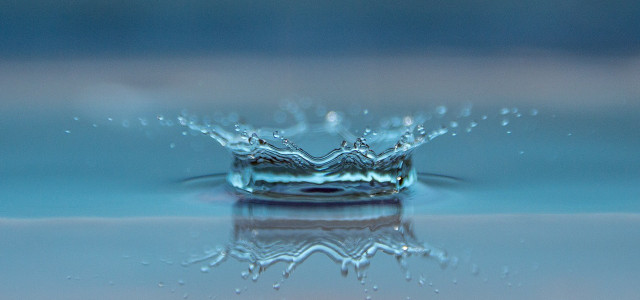Knowing how to store water long-term is a vital part of emergency planning. We look at how to prepare, clean and store water for multiple situations.
Clean drinking water is sometimes unavailable during extreme weather events, unforeseen maintenance issues or power outages. It’s important to be prepared by storing enough water to meet your family’s needs for at least a few days. We’ll look at the basics of how to store water long-term and the steps you can take to collect and maintain an emergency water supply.
How to Store Bottled Water Long-Term
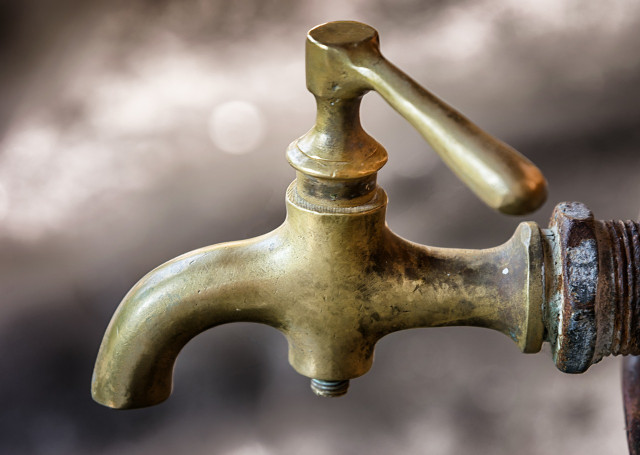
It’s important to have clean hands before either treating or storing water. You can use a hand sanitizer or homemade soap, if available. When thinking about how to store water long-term, there are some key points to remember. For bottled water, we recommend that you:
- Store it in a cool, dark place. If your power is out, store water in the coldest area in your home, like the cellar or basement. Research shows exposure to changing temperatures can cause chemical contamination to leach out of plastic bottles into the water.
- Store bottled water in its original sealed container, and observe the expiration or “use by” date.
- If you have containers at home and want to reuse them, try to choose two-liter plastic drink bottles. However, be careful about what bottles you pick. Follow our guide on how to reuse plastic bottles safely for the best outcome.
- Consider placing the bottles themselves in a container, such as a sealed bag or lined barrel, to avoid dirt, temperature fluctuations and contamination. PET plastic can be affected by shrinkage and cracking, typically caused by temperature changes and prolonged pressure arising from incorrect storage or transport.
3 Methods to Treat Water for Long-Term Storage
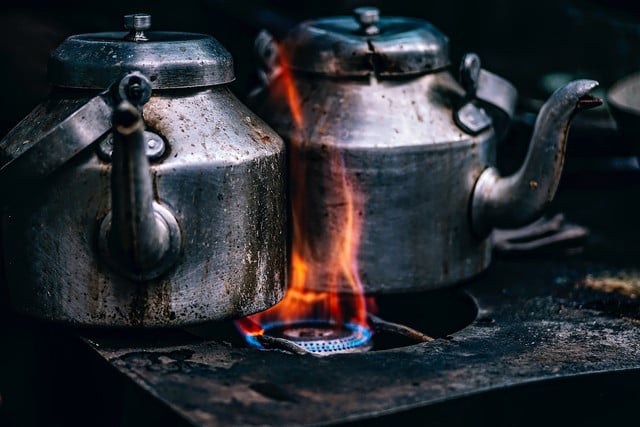


Follow recommendations from your state, local, or tribal health department for boiling or treating water in your area. A safety leaflet is available on the Centers for Disease Control and Prevention (CDC) website. We will summarize the key takeaways below.
1. Boiling
If you have clear water and aren’t sure whether it is safe to drink, boil it before consuming to be safe.
- Bring water to a rolling boil for one minute (at elevations above 6,500 feet, boil for three minutes).
- Let the water cool.
- Store it in a clean, sanitized container with a tight cover.
2. Chemical disinfectants
According to the CDC, if you don’t have safe bottled water and if boiling is not possible, you can make small quantities of water safer to drink by using a chemical disinfectant. For instance, unscented household chlorine bleach, iodine or chlorine dioxide tablets. If your water contains a harmful chemical or radioactive substance, adding a disinfectant will not make it drinkable.
- Add the appropriate amount of bleach (per the instructions on the container) using a medicine dropper, teaspoon or metric measure (milliliters). The CDC recommends eight drops of household bleach per gallon of water.
- Stir the mixture well.
- Let it stand for at least 30 minutes before consuming.
*Note: Dosage and wait times vary for other chemical disinfectants, like iodine or chlorine dioxide.
3. Filters
If you use water filters, pick one with a small enough filter pore size (absolute pore size of one micron or smaller). This helps remove parasites, such as Giardia and Cryptosporidium. Portable water filters do not remove viruses. In fact, most portable filters do not remove bacteria, either.
- Carefully read and follow the manufacturer’s instructions for the specific filter you use.
- Pour the water into the filtering section of the device and wait until the filtered water comes out at the other end.
- After filtering, add a disinfectant such as iodine or chlorine dioxide to the filtered water to kill viruses and bacteria.
Emergency Water Sources
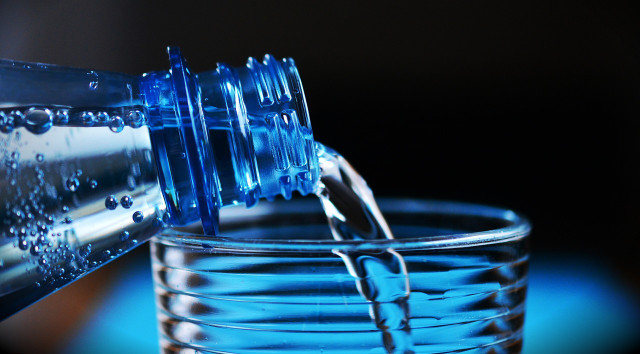


Store-bought bottled water is the safest and most reliable source for long-term water storage. However, different bottles and brands have varying shelf lives. It is best to avoid or reduce exposure to BPA bottles, as BPAs carry health risks.
As we’ll discuss below, all bottled water carries some risk. Avoid opening water bottles until you need to, as water absorbs carbon dioxide, and drink it as soon as possible after opening. In addition, keep it in a cool area once it’s open.
If you don’t have access to bottled water or don’t want to use it, there are a number of sources inside the home you can also consider. You should sterilize this water before you store it.
Emergency water sources:
- If you’re expecting a storm, fill up your bathtub.
- Prepare a few trays of ice cubes in the freezer to melt in an emergency.
- Liquid from canned vegetables or fruit.
- Water from your toilet tank (not the bowl itself).
Sources of outside water that you can treat for drinking include harvested rainwater, rivers and streams, lakes and ponds, and natural springs.
How to Preserve the Water You Source
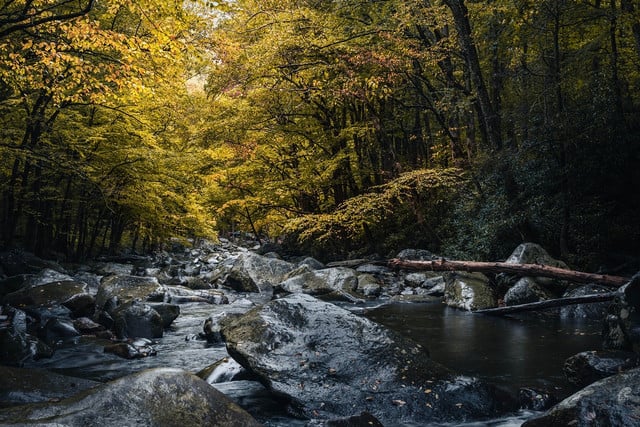


To preserve found water, you will need to purchase food-grade water storage containers. You can find these at surplus or camping supply stores.
It’s better not to use plastic jugs or cardboard containers that have had milk or fruit juice in them. They may provide an environment for bacterial growth when water is stored in them. Cardboard containers are not designed for long-term storage of liquids either. If you’re unsure, remember these points when choosing your container:
- Has a top that can be closed tightly
- Is made of durable materials, such as metal, reinforced ceramics, or glass (i.e., not untempered glass)
- If possible, use a narrow neck or dispenser container so water can be poured out easily.
If you know or suspect your water is unsafe, don’t use that water for drinking, washing dishes, brushing your teeth, washing and preparing food, washing your hands, making ice, or making baby formula.
The Best Water Storage Containers
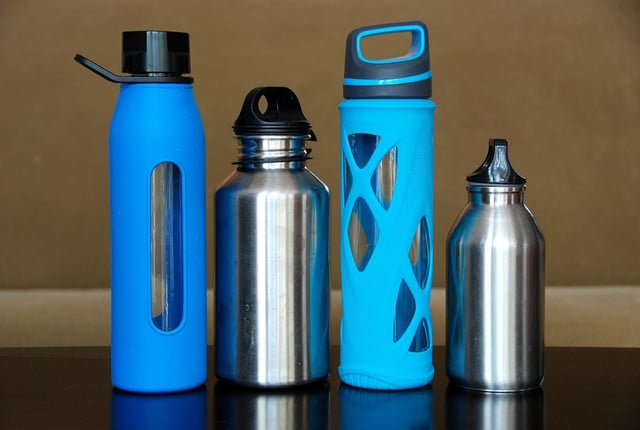


There are three main vessel materials for water recommended by the CDC — durable plastic, metal and ceramic. We also examine recent research, which outlines several factors to consider when choosing the right vessel, such as:
- How well the material regulates its temperature: Is it affected by the external environment? This is key, as when water temperatures rise above 59°F, the risk of bacteria increases.
- General resistance to bacteria and microbial growth: What is the risk of contamination?
- Material quality and storage length: For instance, how long you can store water in the container before contamination sets in?
With these factors in mind, we consider the following three container types:
1. Plastic (polyethylene) containers:
Plastic is the most affected by temperature, so it’s important that it is stored in a dark, cool area. You can also consider getting a lighter-colored vessel as they absorb less heat. While some research shows plastic can maintain water quality for the longest period of time, it must be rinsed properly during each water rotation (when you change water) because microbacteria can grow on the plastic’s surface.
(source -“the PE storage tank has the least microbial regrowth” it is a reference in the research above)
It’s also worth noting that plastic has the longest environmental half-life of any material here: many single-use plastics, for example, have a half-life of 5 to 250 years. This makes it one of the least sustainable options.
If choosing a plastic water container, we recommend the RedCamp water storage jug (available on Amazon**). It is made of HDPE plastic which is one of the more recyclable plastics. It is also leak-proof, portable, and BPA-free.
2. Metal containers:
The main problem with steel or metal vessels, in general, is that disinfectants can cause rusting and corrosion. Therefore, you will only be able to boil them when using them to store water. Nevertheless, water vessels such as copper and brass were found to be highly effective against pathogenic bacteria (those which can cause disease). Not to mention, metals such as copper will last a long time despite being recyclable.
We recommend the Sertodo Copper Water Dispenser (Available on Amazon**). It’s 100% hammered copper. It should be appropriate for about 5-10 years worth of use, and it comes with a stainless steel spout.
3. Ceramic containers:
Ceramic is less affected than plastic by temperature. However, ceramic and earthen vessels also have the shortest storage time for maintaining water quality. While the ceramics industry is typically not the most carbon-friendly, according to research, clay is a readily available material and biodegradable resource.
The vessel we recommend is the New Wave Enviro Water Dispenser (available on Amazon**). It comes from a US-based company dedicated to sustainable water systems and products. The dispenser is BPA and lead-free.
Preparing storage containers:
Some points to follow when preparing containers for water in an emergency:
- Wash the storage container thoroughly and rinse it with clean, sanitized water.
- Sanitize the container with a solution made by mixing 1 teaspoon of unscented liquid household chlorine bleach in 1 quart of water. Use bleach that contains 5%–9% sodium hypochlorite.
- Cover the container tightly and shake it well, ensuring all areas are sanitized.
- Let sit for 30 seconds, then pour the sanitizing solution out of the container.
- Allow the container to air-dry before use, or thoroughly rinse the empty container with safe water (water that has been treated).
- Pour clean water into the sanitized container and cover it with a tight lid.
*You’ll need to follow our guide to cleaning copperware for copper containers.
FAQs
How much water should you store?
If possible, store one gallon per person per day, to avoid having to ration water. Everyone is different and may need different amounts of liquids to stay hydrated. For instance, the US National Academies of Sciences, Engineering, and Medicine states that men should drink about 15.5 cups and women about 11.5 cups per day, but this can vary from person to person. Children should drink different amounts depending on their age.
Try to store a 2-week supply for each person, where possible. If not, store as much as you can. Consider storing more water than you need if you live in a hot climate, have pregnant women in your household, or in case someone is sick.
How long does water last?
Water itself does not expire. However, most store-bought water manufacturers give an expiry date of about 2 years. If stored correctly, water may last longer. You can find more in-depth information about how long water lasts here.
When should you start collecting emergency water supplies?
The best time to store water for an emergency is as soon as possible, as no one knows for sure when an emergency may happen. It’s best to be prepared well in advance. However, in order to avoid water waste, it’s important that you drink/use up your existing water before going to replenish supplies.
Read on:
- Keep Safe This Season With These 8 Winter Safety Tips
- 12 Reusable, Eco-Friendly Water Bottles for Sports and Everyday Hydration
- The Essential (Sustainable) Go Bag List
Do you like this post?






